2.2 Slice 性能及陷阱
2023年10月3日...大约 3 分钟
1. 数组
1.1 类型
Golang 中的数组类型由两个因素确定:
- 数组长度
- 元素类型
只有两者均相同时,才是相同类型:
a := [2]int{1, 2}
b := [2]string{"a", "b"}
c := [3]int{1, 2, 3}
a和b长度相同但元素类型不同,不是同一类型a和c元素类型但数组长度不同,不是同一类型
1.2 赋值
数组类型的赋值会拷贝整个数组,若将大型数组作为参数应使用指针类型,以减小性能损耗。
2. 切片
切片的数据结构可以由reflect.SliceHeader表示:
type SliceHeader struct {
Data uintptr
Len int
Cap int
}
- Data:指向底层数组
切片的赋值,不会拷贝底层数组,而是拷贝其指针,此时新旧切片会指向同一数组。
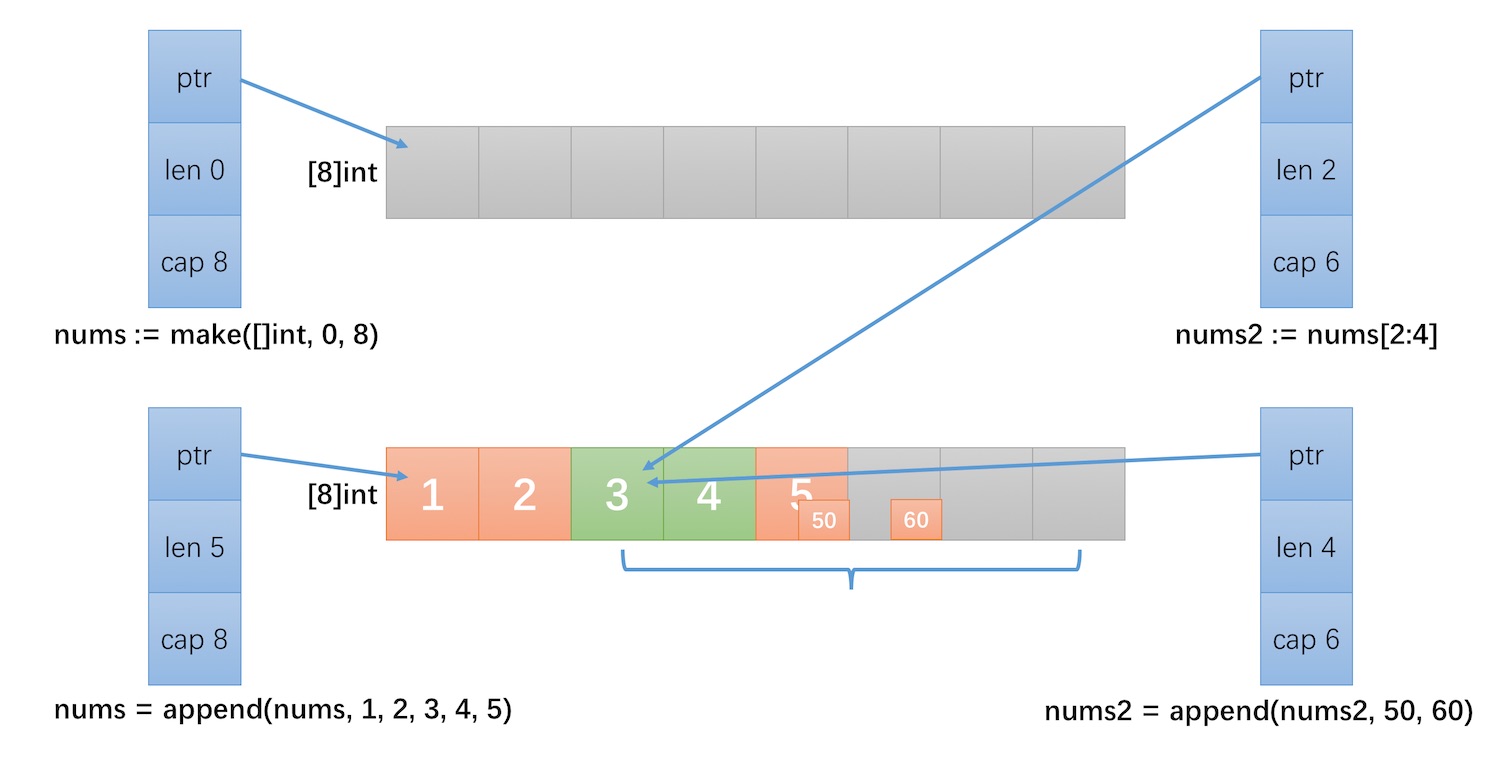
3. 操作
3.1 copy
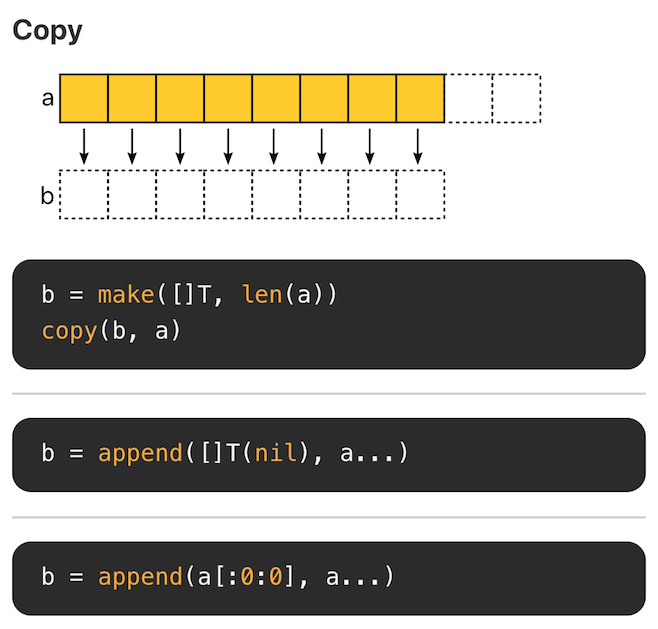
3.2 append

- append 之后长度小于等于容量,则利用底层数组的剩余空间
- append 之后长度大于容量,则进行扩容,将新旧数据拷贝过去; 若能预先知道容量,则能够减少扩容次数以提升性能
3.3 delete
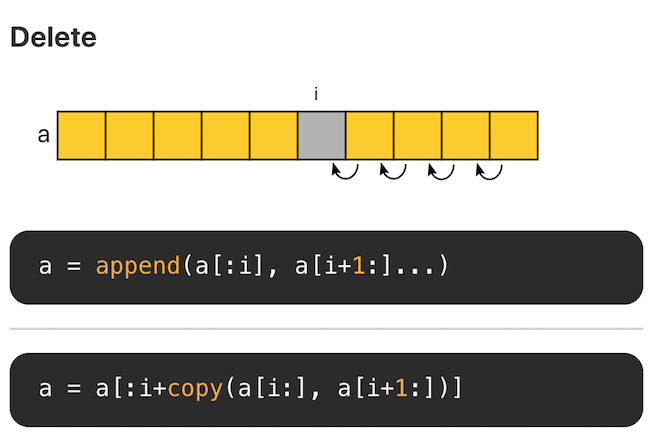
删除切片的某个元素之后,需要将后序元素向前移动一位,时间复杂度为 O(n)
3.4 delete (GC)
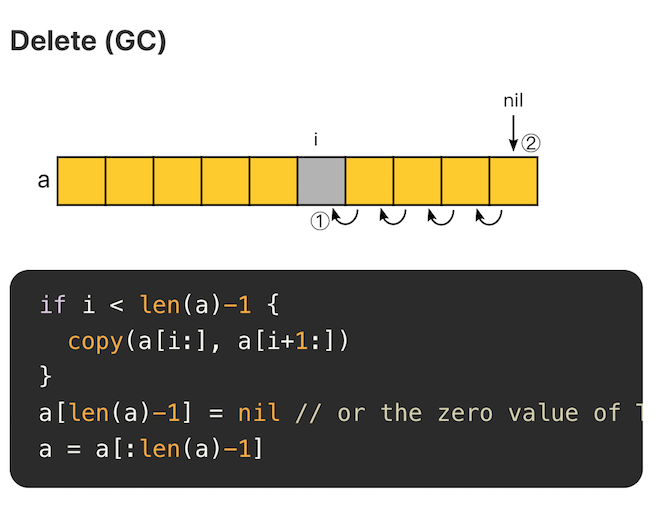
将删除的元素置空,方便GC
3.5 insert
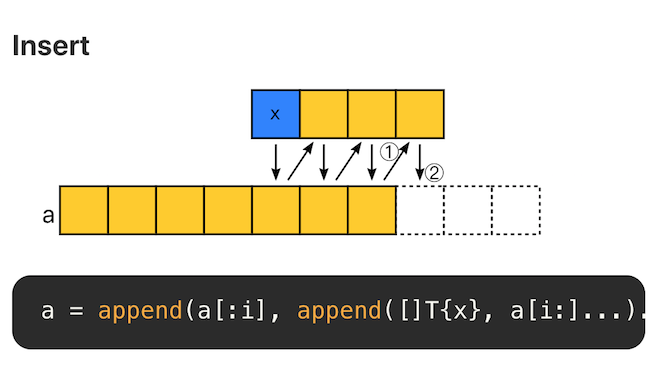
在某个位置添加一个元素后,将该位置后面的元素再 append 回去。复杂度为 O(N)。
3.6 filter
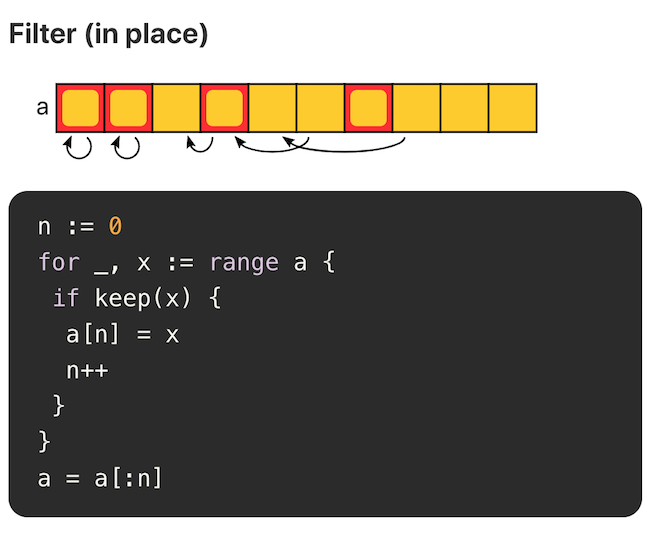
3.7 push
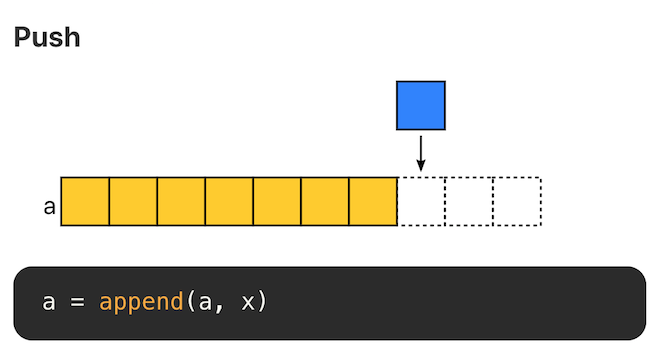
在末尾追加元素,不考虑内存拷贝的情况,复杂度为 O(1)。
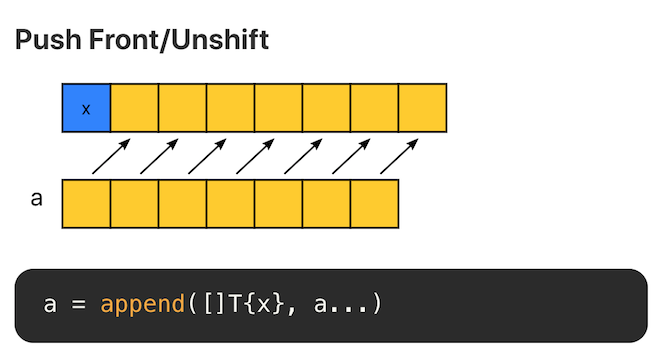
在头部追加元素,时间和空间复杂度均为 O(N)。
3.8 pop
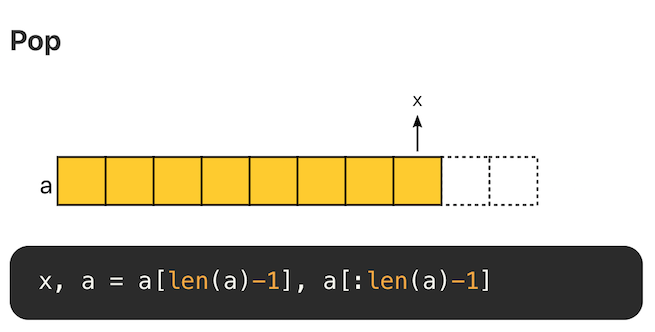
尾部删除元素,复杂度 O(1)
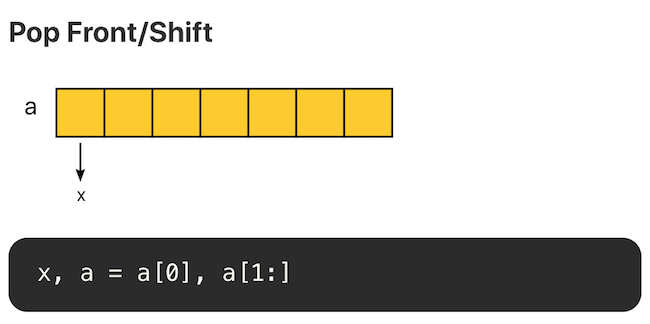
头部删除元素,复杂度为 O(1)。
需要注意的是,底层数组没有发生改变,第 0 个位置的内存仍旧没有释放。如果有大量这样的操作,头部的内存会一直被占用。
4. 性能陷阱
4.1 大量内存得不到释放
若在现有的 slice 上进行 re-slice 操作获取新的切片,不会创建新的底层数组,而是新切片直接指向原数组。
若频繁的进行 re-slice 操作,可能出现底层数组占用非常大的内存,而切片只引用其中的一小部分,并且数组无法被 GC 回收,造成内存浪费。
故因使用 copy 来取代 re-slice 操作。
func getLastElemsUsingReslice(a []int, n int) []int {
return a[len(a)-n:]
}
func getLastElemsUsingCopy(a []int, n int) []int {
res := make([]int, n)
copy(res, a[len(a)-n:])
return res
}
getLastElemsUsingReslice:通过 re-slice 方式获取最后 n 个元素getLastElemsUsingCopy:通过 copy 方式获取最后 n 个元素
进行测试:
func printMem(t *testing.T) {
t.Helper()
var mstat runtime.MemStats
runtime.ReadMemStats(&mstat)
t.Logf("%.2f MB", float64(mstat.Alloc)/1024./1024.)
}
func TestGetSlice(t *testing.T) {
tests := []struct {
name string
f func([]int, int) []int
}{
{name: "UsingReslice", f: getLastElemsUsingReslice},
{name: "UsingCopy", f: getLastElemsUsingCopy},
}
for _, tt := range tests {
t.Run(fmt.Sprintf("%-20s", tt.name), func(t *testing.T) {
var res [][]int
for i := 0; i < 100; i++ {
nums := genSliceWithCap(128 * 1024)
res = append(res, tt.f(nums, 2))
}
printMem(t)
})
}
}
t.Helper():标识当前函数为辅助函数,当打印测试信息时(如文件,代码行位置)时会跳过辅助函数runtime.ReadMemStats(*runtime.MemStats):读取当前的内存分配信息
=== RUN TestGetSlice/UsingReslice________
slice_test.go:42: 100.21 MB
=== RUN TestGetSlice/UsingCopy___________
slice_test.go:42: 3.22 MB
可以看出使用 reslice 操作之后,存在切片对原数组的引用时,原数组无法回收导致大量的内存占用。
若在测试中,手动调用 runtime.GC() 启动 GC,此时差距就更加的明显:
func TestGetSlice(t *testing.T) {
tests := []struct {
name string
f func([]int, int) []int
}{
{name: "UsingReslice", f: getLastElemsUsingReslice},
{name: "UsingCopy", f: getLastElemsUsingCopy},
}
for _, tt := range tests {
t.Run(fmt.Sprintf("%-20s", tt.name), func(t *testing.T) {
var res [][]int
for i := 0; i < 100; i++ {
nums := genSliceWithCap(128 * 1024)
res = append(res, tt.f(nums, 2))
runtime.GC()
}
printMem(t)
})
}
// output
=== RUN TestGetSlice/UsingReslice________
slice_test.go:43: 100.21 MB
=== RUN TestGetSlice/UsingCopy___________
slice_test.go:43: 0.22 MB
Reference
Powered by Waline v2.15.2
